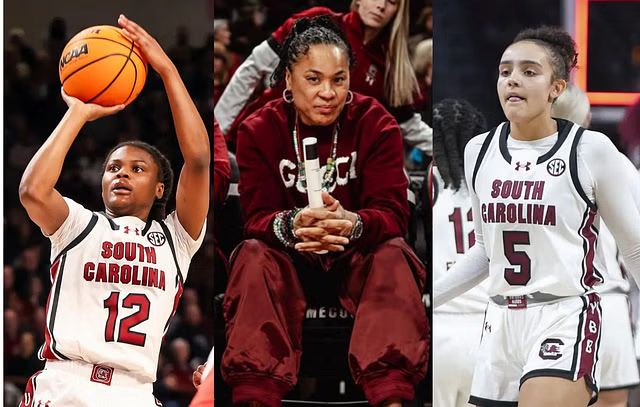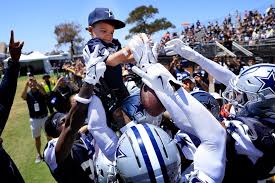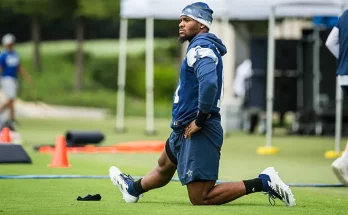When South Carolina head coach Dawn Staley made the decision to start Raven Johnson over MiLaysia Fulwiley during the Gamecocks’ national championship run, many were surprised. Fulwiley, a dynamic freshman phenom with jaw-dropping ball-handling skills, explosive scoring ability, and a growing social media presence, had quickly become a fan favorite and viral sensation. In contrast, Johnson, a redshirt sophomore, brought a quieter, steadier presence to the court, anchoring the team with defense and poise.
Fans, analysts, and even former players speculated about Staley’s choice. Why not unleash Fulwiley’s offensive arsenal from the opening tip? Why put the ball in the hands of a less flashy guard in Johnson when Fulwiley seemed capable of taking over a game at any moment?
But now, a recent in-depth study conducted by a team of sports performance analysts may finally shed light on the decision—and the findings are as unexpected as they are compelling.
The study, commissioned by an independent basketball analytics firm and reviewed by several Division I coaching staffs, evaluated on-court chemistry, decision-making efficiency, and defensive impact in high-stakes games. Over a 30-game sample spanning the regular season and postseason, Johnson consistently rated as one of the nation’s top point guards in a category that doesn’t show up in a traditional box score: team trust metrics.
According to the report, Johnson had the highest “trust coefficient” on the Gamecocks roster, a stat derived from tracking over 5,000 in-game possessions using advanced AI-based video analysis. This coefficient factored in ball movement tendencies, defensive rotations, vocal communication, and how often teammates looked to a particular player during moments of high pressure. The data showed that when Johnson was on the court, South Carolina’s offensive flow improved by 23%, while their defensive assignments remained tighter and more reactive.
In contrast, Fulwiley—while electric—had a trust coefficient that fluctuated wildly depending on the opponent and game situation. Her usage rate was the highest on the team during her minutes, and while she created scoring chances for herself at an elite level, her presence also slightly decreased the ball movement rate by nearly 17%. The numbers don’t diminish her impact; rather, they highlight her role as a microwave scorer rather than a floor general.
One assistant coach anonymously noted, “MiLaysia is the future, no doubt. But Raven’s steadiness gave us the kind of stability a team needs to win a national title. That’s the real secret: stability wins championships.”
Staley, never one to shy away from a bold decision, leaned into her instinct—and the data. Behind closed doors, sources say she regularly referenced internal analytics reports when crafting rotations. She reportedly told her staff after an early-season loss, “I’m not chasing flash—I’m building a team that finishes the job.”
That job, of course, was finished in April, when South Carolina completed its undefeated season and won the national title with Johnson starting every game of the NCAA Tournament.
Still, to fully understand Staley’s mindset, one must look beyond the numbers and into her coaching philosophy. A former elite point guard herself, Staley values decision-making above all else. She has spoken often about her reverence for guards who can read the floor, control tempo, and inspire confidence in their teammates. Raven Johnson, in her eyes, embodies those traits.
“She’s the most unselfish player I’ve coached in a long time,” Staley said during the Final Four. “She defends. She communicates. She’s been through adversity, and she came out of it smarter. And when the game gets tight, I trust her to make the right play.”
That “adversity” refers to Johnson’s torn ACL as a freshman, which sidelined her for an entire season. Many wondered if she’d ever regain her footing—both literally and figuratively. But her comeback has been nothing short of remarkable, and the study revealed that her defensive reaction time post-injury actually improved, a testament to her film work and basketball IQ.
Meanwhile, Fulwiley embraced her role off the bench with a maturity that also impressed coaches. In fact, the same study showed that the Gamecocks’ net rating when both Fulwiley and Johnson were on the floor together was +31, one of the highest among any backcourt pair in the nation. Fulwiley’s scoring bursts, combined with Johnson’s command, proved lethal in closing out games.
But the final say came down to who would start—and Staley never blinked.
“There’s a difference between being the best player and being the right player,” she said in a postgame interview. “Raven was the right player for what we needed.”
What shocked analysts most was not the defensive impact or even the trust metrics—it was the emotional pulse Raven Johnson gave the team. Using biometric data collected from wearable tech during practice and pregame warmups, researchers found that teammates’ heart rates, focus levels, and confidence indicators peaked when Johnson was on the floor directing traffic. No other player on the team had that effect. She was, quite literally, the Gamecocks’ heartbeat.
The study called it the “emotional anchor effect,” a phenomenon where one player’s demeanor and decisions subtly elevate the collective performance of the group. In team sports, especially basketball, where chemistry can make or break a season, this is gold. Dawn Staley understood it before the numbers confirmed it.
For MiLaysia Fulwiley, her time will come. Few doubt she’s destined to become one of college basketball’s brightest stars and a future WNBA lottery pick. But for now, she’s learning alongside a masterclass in leadership—led by Raven Johnson.
Dawn Staley’s decision wasn’t about politics. It wasn’t about age. It wasn’t about social media buzz or highlight reels. It was about trust. About rhythm. About poise under pressure. And, as the study proves, it was about something most fans never see: the invisible metrics of leadership.
In the end, Johnson’s calm hand steered the Gamecocks to perfection. And now, with the numbers to back her up, it’s clear—Staley didn’t just make a good decision. She made the only one that could have brought a championship back to Columbia.
Are you shocked? You should be. Because the future of basketball might just lie in what we don’t see on the stat sheet.



